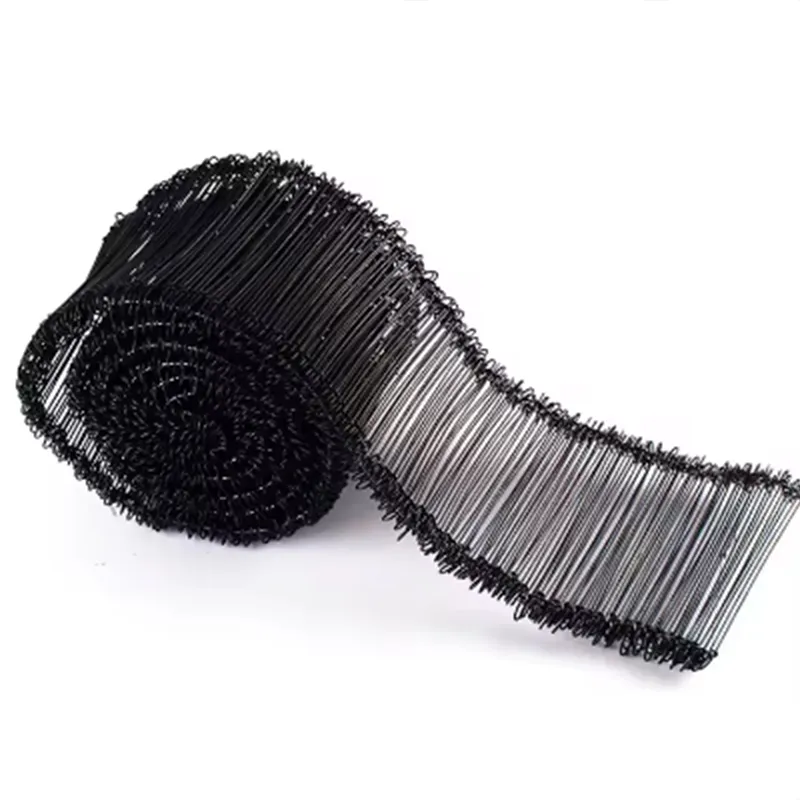-
 Phone:
Phone: -
 Email:
Email:

double loop rebar tie wire
Double Loop Rebar Tie Wire An Essential Component in Construction
In the realm of construction, every detail counts, and the structural integrity of buildings relies heavily on the proper application of various materials and tools. One such essential component is the double loop rebar tie wire. This specialized wire plays a pivotal role in reinforcing concrete structures, ensuring their stability and longevity.
Double loop rebar tie wire is designed to connect and secure rebar (reinforcing bars) in place during the pouring of concrete. The necessity of this component arises from the inherent nature of concrete, which, while strong under compression, is relatively weak when subjected to tension. To counteract this weakness, rebar is embedded within concrete to provide tensile strength. The placement of this rebar is critical and must remain fixed during the concrete curing process. This is where double loop rebar tie wire comes into play.
The design of double loop tie wire features two loops at each end, which allows for a more secure attachment to the rebar. This feature stands in contrast to single loop tie wire, which may not provide the same level of stability. The double loop enhances grip and reduces the likelihood of slippage, ensuring that the rebar is held firmly in its required position.
To install double loop rebar tie wire, workers use a tying tool or rebar tie wire twister. The wire is wrapped around the intersecting rebar and twisted tightly to form a secure bond. This efficient method saves time and effort in the construction process while also enhancing safety. An adequately tied rebar cage is crucial, as any movement can compromise the structural integrity of the concrete once poured.
double loop rebar tie wire

The material composition of double loop rebar tie wire is also noteworthy. Typically made from high-strength, low-carbon steel, the wire is designed to withstand the harsh conditions of construction environments. The flexibility of the wire allows for easy handling, while its strength ensures that it can perform under the stress of both the rebar setup and the weight of the concrete. The resilience of this tie wire also means it can endure the curing process of concrete, which often generates significant heat and stress.
Moreover, double loop rebar tie wire comes in various diameters and lengths, providing versatility for different construction needs. Construction projects may vary significantly, from small home renovations to large-scale infrastructure projects, and the availability of different sizes ensures that contractors can select the appropriate wire for their specific applications.
Cost-effectiveness is another advantage of using double loop rebar tie wire. While affordable, its utilization can significantly enhance the overall efficiency and safety of construction projects. By minimizing the risk of rebar movement during the curing process, double loop tie wire helps to prevent costly delays and repairs that might arise from structural failures.
Environmental considerations are becoming increasingly important in modern construction, and double loop rebar tie wire aligns with sustainable practices. Many manufacturers are focused on producing tie wire with ethically sourced materials, and the durability of the wire means that structures will require less frequent maintenance or repairs, thereby reducing waste.
In conclusion, double loop rebar tie wire is a fundamental component in the construction industry, significantly contributing to the stability and longevity of reinforced concrete structures. Its design allows for secure attachment, its material properties ensure durability, and its cost-effectiveness makes it a staple on construction sites. As the construction industry continues to evolve, the importance of reliable and efficient materials like double loop rebar tie wire will only grow, ensuring that our built environment remains safe, robust, and resilient. Understanding and utilizing such components is crucial for any construction professional aiming to deliver quality workmanship.
-
Wire Mesh for Every Need: A Practical SolutionNewsJul.25,2025
-
Steel Fences: Durable, Secure, and Stylish OptionsNewsJul.25,2025
-
Roll Top Fencing: A Smart Solution for Safety and SecurityNewsJul.25,2025
-
Cattle Farm Fencing Solutions for Maximum SecurityNewsJul.25,2025
-
Affordable Iron Binding Wire SolutionsNewsJul.25,2025
-
Affordable Galvanized Wire SolutionsNewsJul.25,2025
-
Wire Hanger Recycling IdeasNewsJul.25,2025








